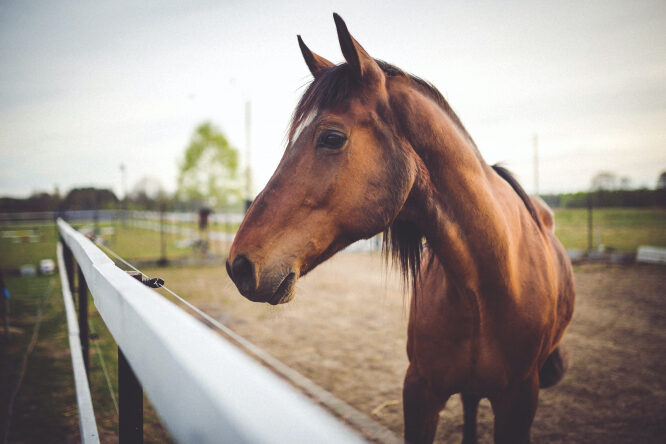
Horse owners are increasingly worried about how to protect their animals from the attacks.
The horse owner scared away two individuals armed with knives on his property, after they had already stabbed a horse. This comes following at least
15 other macabre horse attacks in France this year.The horse owner was alerted to the unexpected visitors on the night of August 24, after his dog's barking woke him.
He managed to scare away the armed attackers on his property in Montholon (Bourgogne-Franche-Comté), but only after they had already stabbed a horse multiple times.
The wounds suffered by the horse were skin deep, and it will survive the attack.
At least 15 attacks in France, police mystifiedOther animals have not been so lucky. This attack is thought to be linked to at least 15 other incidents in France since February 2020, which have seen horses, ponies and donkeys killed and mutilated. The attacks have some common threads: the dead animals are often found with an ear and other body parts removed as well as mutilations on their genitals and other areas.
National equine association, the Fédération Française d'Équitation announced last week that "faced with a series of acts of cruelty towards equine animals all over France" it would file a civil case alongside owners who have had animals attacked in the past few months.
However, the motivation behind the attacks is unclear. The incidents often happen on large rural properties at night, and are only discovered in the morning.
A spokesperson for the national police said: "We don't understand what is behind this. Is it a satanic rite, some macabre trophy hunt or an internet challenge? We don't know. It's very traumatising."
It is also not clear how many people are carrying out the attacks and how or if they are coordinated. Lionel Pascal is a public prosecutor in Jura (Bourgogne-Franche-Comté), a commune which has seen four attacks. He told
news source France Info: "The operating method seems to be the same, in that it essentially targets the horses' genitals, but there are no elements that allow us to say we are looking for one individual or one group."
( Read more
here)

Comment: French police urge vigilance as horse mutilations mount